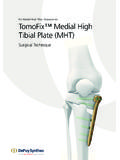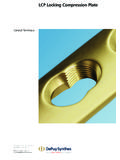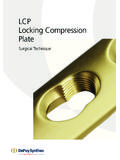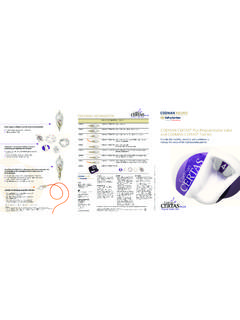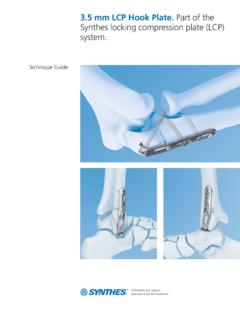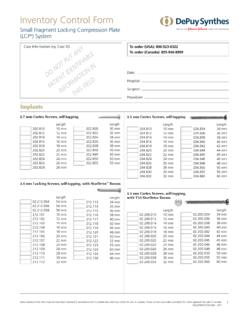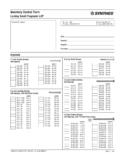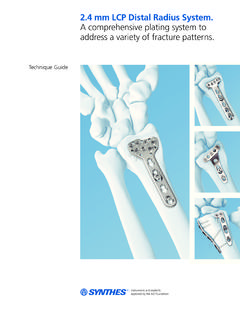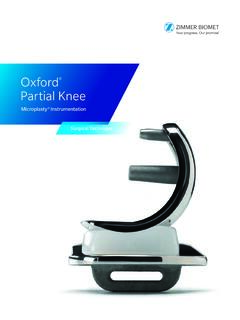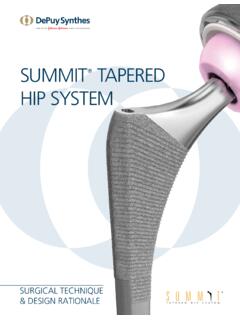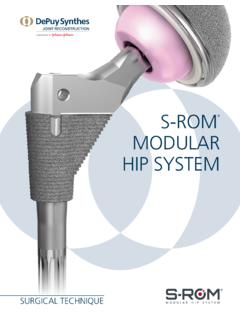Transcription of PINNACLE Hip Solutions
1 PINNACLE .. Hip Solutions surgical Technique surgical Technique The PINNACLE Acetabular Hip System primary surgical technique has been developed in consultation with an experienced surgeon design team and provides the surgeon with general guidance when implanting the PINNACLE . Acetabular Hip System. 2 DePuy Synthes surgical Technique PINNACLE Hip Solutions Table of Contents surgical technique Introduction 2. Templating and Pre-Operative Planning 4. surgical Approach Anterolateral 6. surgical Approach Posterolateral 8. Acetabular Reaming 10. Acetabular Shell Trialing and Positioning 11. Implanting a PINNACLE Primary Acetabular Shell 18. Implanting the Acetabular Shell with Screw Fixation 19. Implanting the Acetabular Shell with Spikes 21. Polyethylene Liner Insertion and Impaction 22. Polyethylene Liner Extraction 24. Functional Assessment 26. Tight Exposure and Stability Tips 28. Technical Specifications Polyethylene Liner Thickness Chart 30. PINNACLE Hip Solutions Polyethylene surgical Technique DePuy Synthes Companies 3.
2 Templating and Pre-Operative Planning The primary goal of total hip arthroplasty is the anatomic reconstruction of the hip joint, resulting in favorable prosthetic joint load and function. Mechanically, the goals are to create a stable articulation with an optimized range of motion, restore biomechanics for muscular efficiency and equalize limb lengths. Meeting these goals begins with a thorough analysis of the hip with comparison to the contralateral side in anteroposterior (A/P) and lateral projections. The desired magnification for all imaging should be 20 percent, which corresponds to the acetate templates provided for the PINNACLE Acetabular System (Figure 1A). Magnification markers taped to the patient's leg at the level of the trochanter will assist in determining actual magnification. For the A/P projection, place both extremities in 15. degrees of internal rotation to position the head and neck parallel to the coronal plane. Center the beam on the pubic symphysis and ensure the proximal femoral shaft is included in the radiograph.
3 The radiographs should clearly demonstrate the acetabular configuration and the endosteal and periosteal contours of the femoral head, neck and proximal femur. 4 DePuy Synthes surgical Technique PINNACLE Hip Solutions Frequently, the affected hip is fixed in external rotation, which leads one to underestimate the amount of offset present. In this situation it may be helpful to template the normal hip. Take a Lowenstein lateral with the patient on his/her side, and the trochanter, ankle and knee on the table. Alternately, take a Johnson's lateral for a detailed examination of the anatomic version and anterior osteophytes. Take into consideration any anatomical anomaly, dysplasia, previous fracture or leg length discrepancy. PINNACLE Acetabular Templates are oriented at 45. degrees and allow measurement of any hip that can be accommodated by the PINNACLE Acetabular Cup System primary components (38 72 mm). Using the A/P. radiograph, position the template at a targeted 40 45. degrees to the inter-teardrop or interischial line so that Figure 1A.
4 The inferomedial aspect of the cup abuts the teardrop and the superior-lateral cup is not excessively uncovered (Figures 1B and 1C). Figure 1B: Acetabulum with Good Lateral Coverage Figure 1C: Positioned Acetabular Template PINNACLE Hip Solutions surgical Technique DePuy Synthes 5. Anterolateral surgical Approach Use the approach with which you are most familiar. PINNACLE Hip System instrumentation was designed to accommodate all surgical approaches. Skin Incision For the anterolateral approach, place the patient in the lateral decubitus position and execute a skin incision that extends from distal to proximal, centered over the anterior aspect of the femur, continuing over the greater trochanter tip (Figure 2). Figure 2: Skin Incision Fascial Incision The iliotibial band is split under the skin incision, extending proximally into the gluteus maximus or in between the maximus and the tensor fascia lata muscles (Figure 3). Figure 3: Fascial Incision Initial Exposure Palpate the anterior and posterior borders of the gluteus medius.
5 The gluteus medius is split from the trochanter, parallel to its fibers, releasing the anterior 1/2 to 1/3 of the muscle (Figure 4). The gluteus medius should not be split more than 4 cm from the tip of the greater trochanter. Care must be taken to ensure the inferior branch of the superior gluteal nerve is not damaged. The gluteus minimus is exposed and released either with or separate from the gluteus medius. Flexion and external rotation of the leg Figure 4: Gluteus Medius Split facilitates exposure of the hip capsule, which is incised (capsulotomy) or excised (capsulectomy) depending on surgeon preference. 6 DePuy Synthes surgical Technique PINNACLE Hip Solutions Hip Dislocation Dislocate the hip with gentle adduction, external rotation and flexion. The patient's leg is now across the contralateral leg and the foot is placed in a sterile pouch (not shown, Figure 6). If dislocation is difficult, additional inferior capsule may be released. Figure 6: Hip Dislocation Femoral Neck Osteotomy Expose the femoral neck (Figure 7) and perform a femoral neck osteotomy protocol for the selected femoral prosthesis.
6 Exposure of the acetabulum is accomplished by placing the leg back on the table in slight flexion and external rotation. Use a self-retaining retractor to spread the medius and minimus anteriorly and the hip capsule posteriorly. Figure 7: Femoral Neck Exposure Acetabular Exposure Carefully place another retractor over the anterior inferior wall of the acetabulum. The final retractor is placed in the acetabular notch beneath the transverse ligament and pulls the femur posteriorly (Figure 8). Figure 8: Acetabular Exposure PINNACLE Hip Solutions surgical Technique DePuy Synthes 7. Posterolateral surgical Approach Use the approach with which you are most familiar. PINNACLE Hip System instrumentation was designed to accommodate all surgical approaches. Skin Incision For the posterolateral approach, place the patient in the lateral decubitus position. Ensure that the operating table is parallel to the floor and that the patient is adequately secured to the table to improve accuracy. Center the skin incision over the greater trochanter, carrying it distally over the femoral shaft for about 15 cm and proximally in a gently curving posterior arc of about 30 degrees for about the same distance (Figure 9) Figure 9: Skin Incision Fascial Incision Incise the iliotibial tract distally following the skin incision (Figure 10).
7 Develop the incision proximally by blunt dissection of the gluteus maximus along the direction of its fibers. Figure 10: Fascial Incision Initial Exposure Place the leg in extension and internal rotation. Utilize self-retaining retractors to facilitate the exposure. Gently sweep loose tissue posteriorly, exposing the underlying short external rotators and quadratus femoris (Figure 11). Identify the posterior margin of the gluteus medius muscle proximally and the tendon of the gluteus maximus distally. Use caution to protect the sciatic nerve. Incise the quadratus femoris, leaving a cuff of tissue for later repair (Figure 12). This exposes the terminal branch of Figure 11: Short External Rotators the medial circumflex artery, which lies deep to the proximal third of the quadratus femoris. Identify the piriformis tendon, the obturator internus tendon (conjoint with the gemelli tendons) and the tendon of the obturator externus, and free them from their insertions at the greater trochanter.
8 The piriformis and the conjoint tendon may be tagged for subsequent reapproximation. Figure 12: Quadratus Femoris Incision 8 DePuy Synthes surgical Technique PINNACLE Hip Solutions Posterior Capsulotomy Retract the short rotator muscles posteromedially together with the gluteus maximus (with consideration to the proximity of the sciatic nerve), thus exposing the posterior capsule (refer to Figure 12). Place cobra retractors anteriorly and inferiorly (Figure 13). Open the capsule posteriorly starting at the acetabular margin at about 12 o'clock and heading to the base of the neck, around the base of the neck inferiorly and back to the inferior acetabulum, creating a posteriorly based flap for subsequent repair. Excise additional anteriorsuperior capsule to enhance dislocation of the hip. Alternatively the capsule can be excised (capsulectomy). Figure 13: Posterior Capsulotomy Femoral Exposure Place a superior pin or retractor in the ilium at approximately the 12 o'clock position. The pin placement is approximately 2 cm superior to the acetabular margin.
9 Caution should be taken not to penetrate the medial wall of the ilium. Measure leg length and dislocate the hip through a combination of flexion, adduction and internal rotation. Osteotomize the femoral neck in accordance with the protocol of the femoral component you have selected. Acetabular Exposure One key to proper acetabular component positioning is adequate surgical exposure. Following femoral neck resection, pass a curved retractor, which straddles the pubis, or a blunt cobra over the anterior column to displace the femur anteriorly (Figure 14). Position a second retractor at the acetabular notch, inferior to the transverse acetabular ligament. An additional retractor may be positioned posteriorly to retract the capsule or short external rotators. Care should be taken to position retractors to avoid injury to the sciatic nerve. Obtain an unobstructed view of the acetabulum. Excise the entire labrum and remove Figure 14: Acetabular Exposure osteophytes to identify the true anterior and posterior acetabular margins.
10 Release or resect the transverse ligament, together with any accompanying osteophytes. A Note: A detailed technique on the Anterior branch of the obturator artery is often encountered. Clear Approach is also available. all soft tissue from the fovea to define the true medial wall. PINNACLE Hip Solutions surgical Technique DePuy Synthes 9. Acetabular Reaming The goal of acetabular reaming is to restore the center of the natural acetabulum. Initially, employ a grater 6 8 mm smaller than the anticipated acetabular component size to deepen the acetabulum to the level determined by pre-operative Deepened Hemispherical templating (Figures 15 and 16). Subsequent reaming Acetabulum should proceed in 1 2 mm increments. Center the graters in the acetabulum until the deepened socket becomes a true hemisphere. Use a curette to free all cysts of fibrous tissue. Pack any defects densely with cancellous bone. It is important to understand that all PINNACLE . Acetabular Hip System instrumentation is marked with Figure 15: Acetabular Reaming true dimensions meaning, for example, a 54 mm grater reams a 54 mm cavity (Figure 17).
